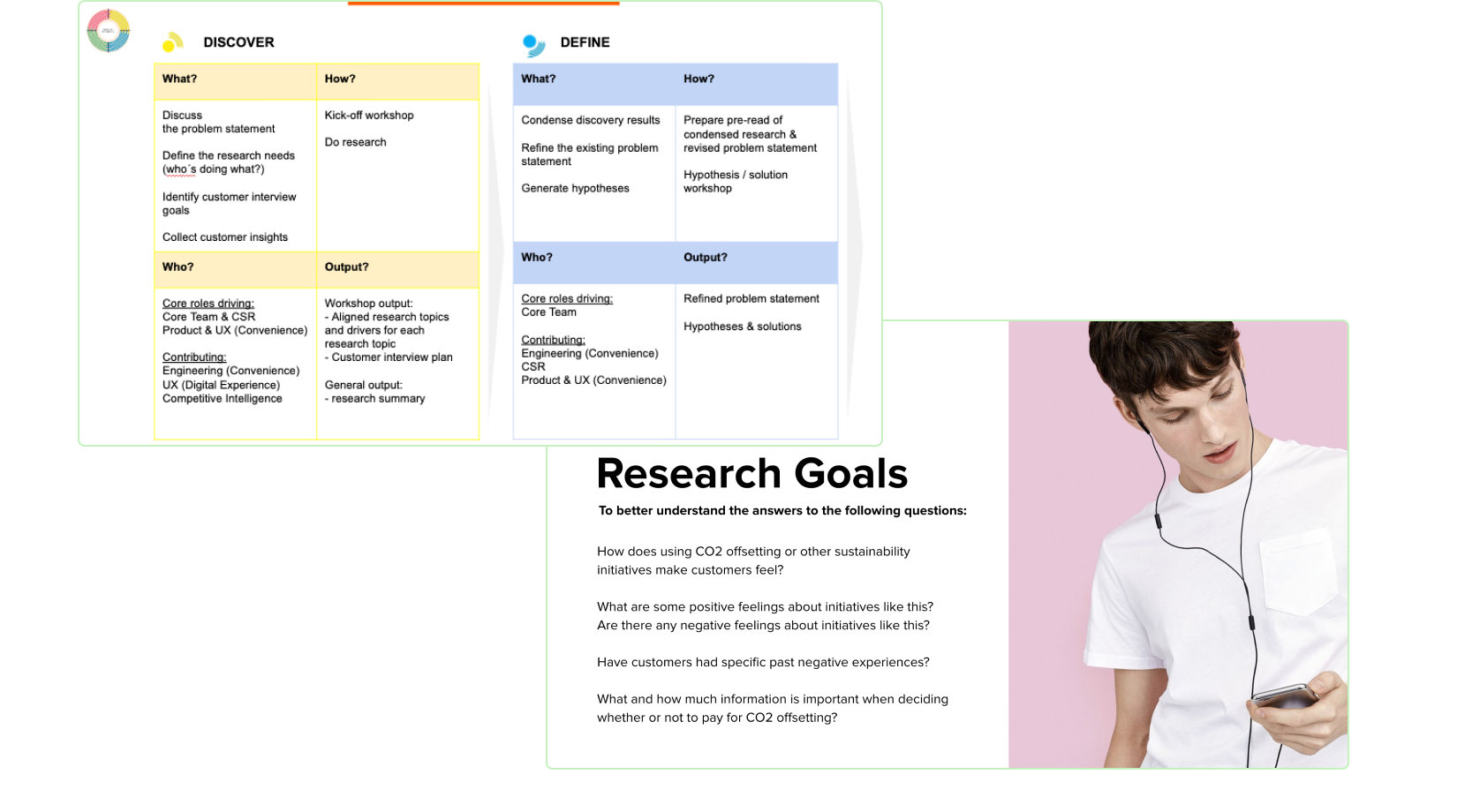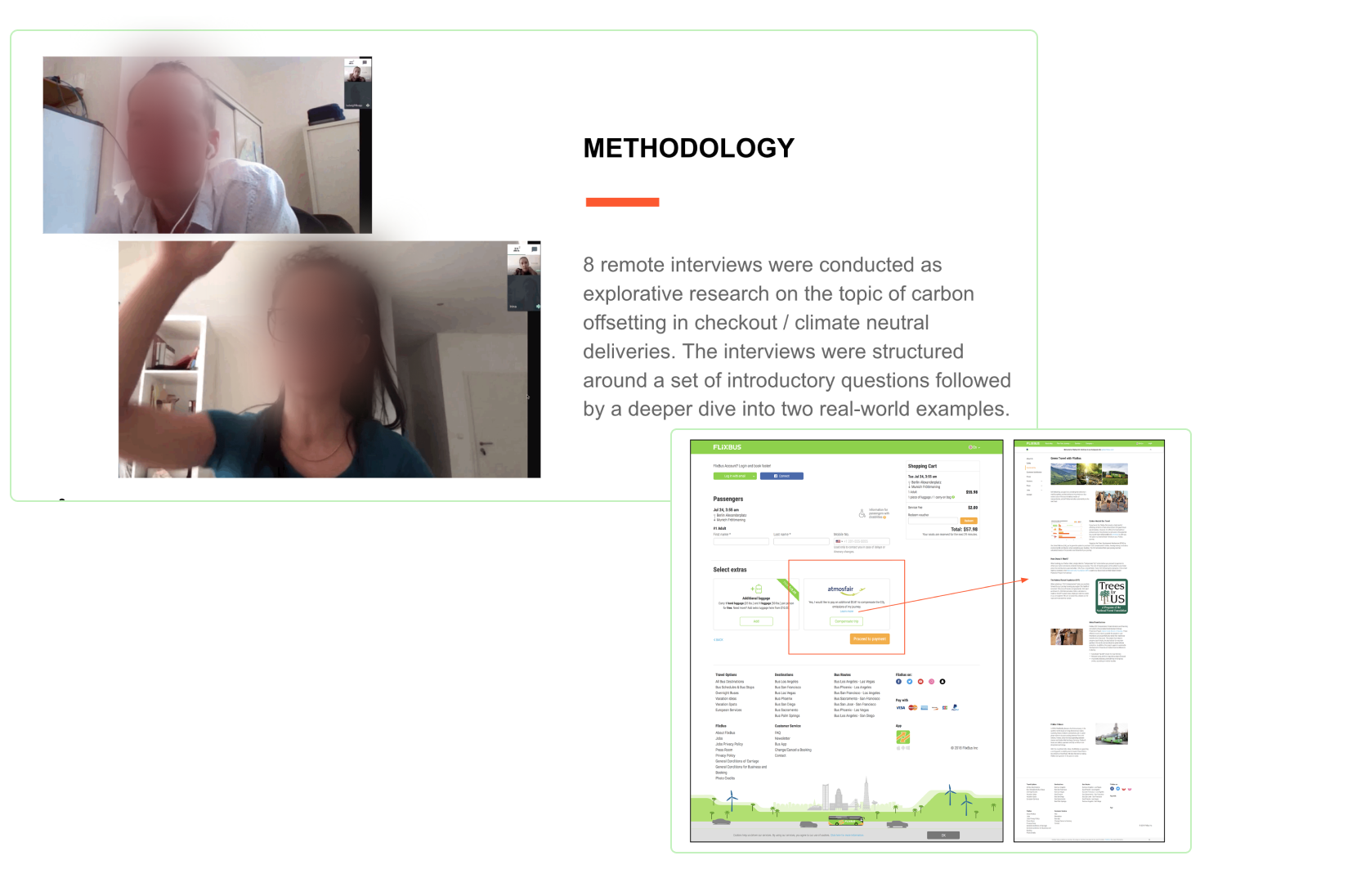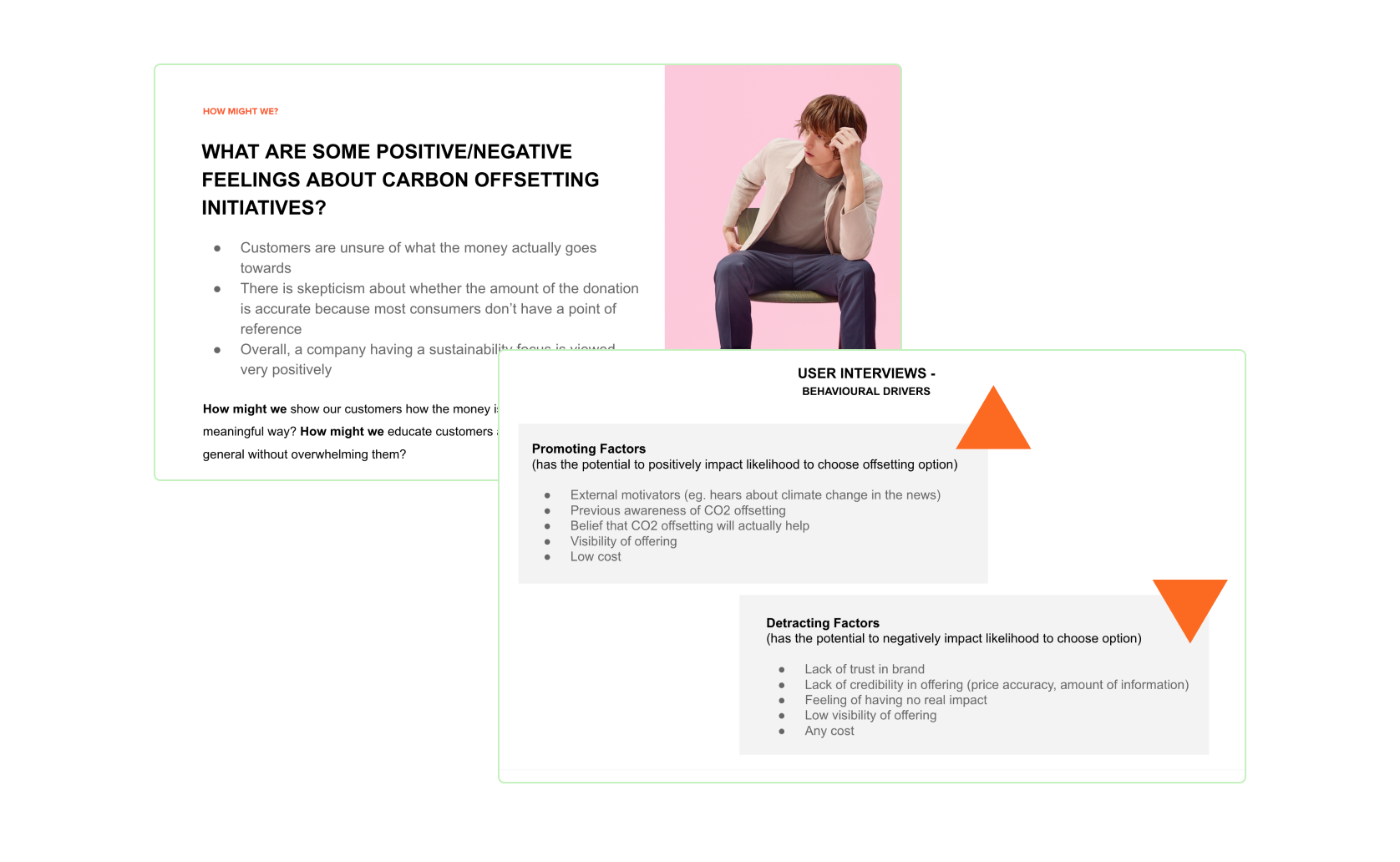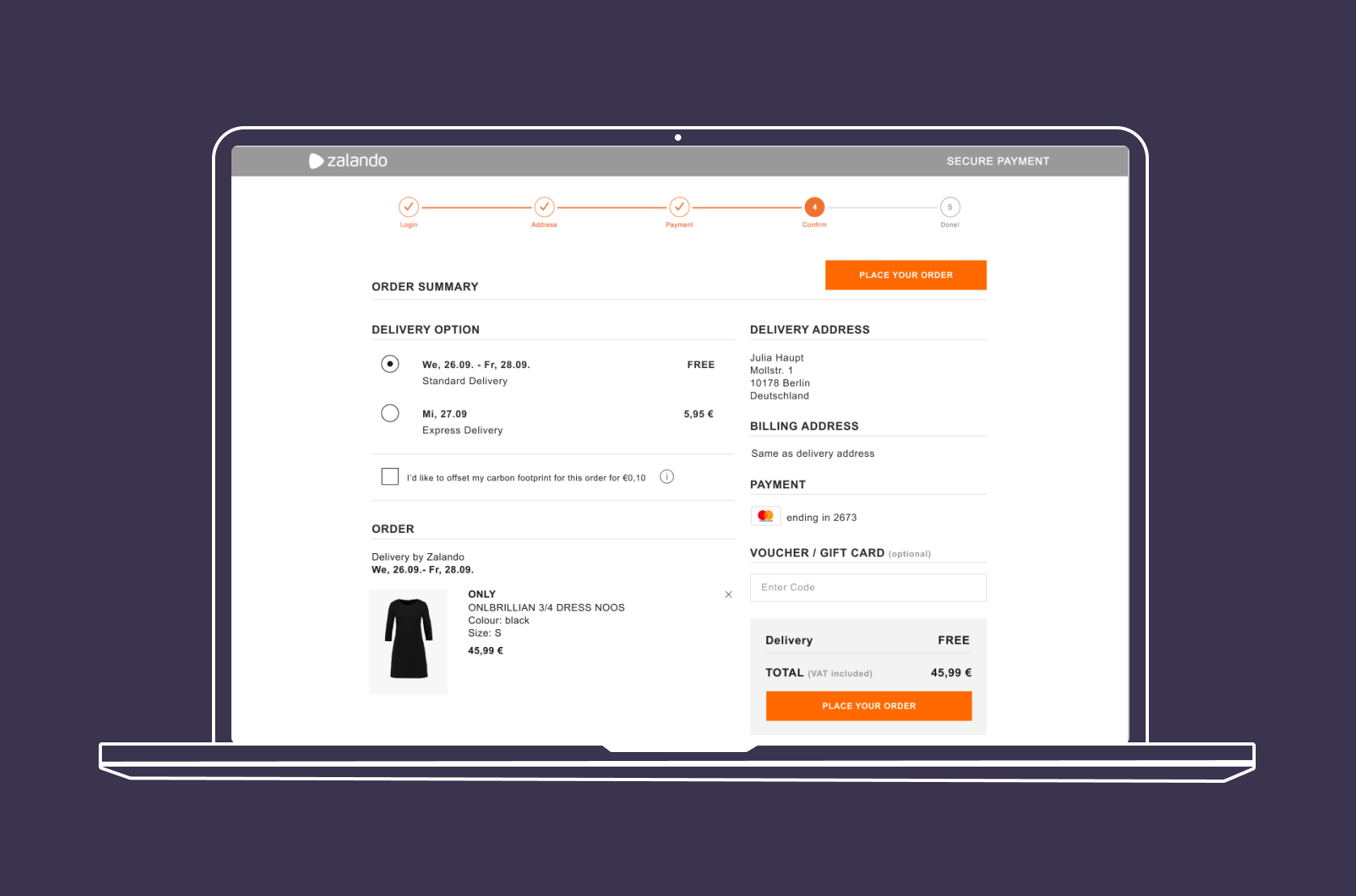
Problem/Brief:
Sustainability is a topic of increasing concern for customers, especially online fashion buyers. Zalando committed to several sustainability targets across it's business, and one of the ideas brought forward was to allow customers to purchase carbon credits to offset the cost from the packaging and shipment of their order. The goal of this project was three-fold: bring awareness and give customers a way to take action on carbon produced from their online shopping order; generate additional income for Zalando's social responsibility projects in order to reduce environmental impact; and do this all without harming key conversion metrics in the checkout.
Result:
Adoption rates in the first test were nearly double the projections, with enthusiastic responses from many customers. Our recommendation to roll the feature out at scale garnered full support in the executive prioritisation round and the next A/B test will launch later this year (🤞). The positive results from this test allow Zalando to confidently move forward with implementing the feature, and to be able to offset even more than the expected carbon volume from customer deliveries.

Process:
I was part of a core product team and the sole designer responsible for the discovery, define, and design phases.
I advocated for a 4D approach so that we could conduct a thorough discovery in order to fill in gaps in our knowledge with customer insights before moving on to the solution phase.
Because this was the first time I'd lead this process, I used internal resources to understand the model, create the framework, and plan the milestones for our first 3 months of work.
As part of the discovery, I engaged our core stakeholders, (the corporate social responsibility team), in several workshops to identify the key research questions, planned the resources we could use to answer them, and divided up the work amongst our team.
This included competitive analysis to understand what other companies were doing in the sustainability space, desk research to dig through old market research reports for relevant insights, and conducting 8 remote customer interviews in 3 different markets to answer our remaining open questions.
Because the project had no dedicated researcher, I took on the responsibility for this, and recruited, scripted, conducted, and analysed the qualitative interviews, which was also the first time I had been solely responsible for this. I did this by using self-service research resources, as well as reaching out to the ux research team for feedback on my session materials before the test.
I uncovered customers' feelings, questions and reservations towards carbon offsetting that helped me shape the eventual solution proposals.
At the end of the discovery, I pulled together the insights and summarised the answers to our research questions, focusing on 'How Might Wes,' such as "HMW ensure trust in Zalando as a climate partner?" This was presented first in a smaller group of senior stakeholders, as well as later in a larger round to teams in different departments.
During the larger share out I also conducted a group brainstorming and sketching session to gather potential answers to our HMWs, and collect input from different parts of the business.
During the next phase, I designed some simple changes to the checkout UI for the first test that would allow us to quickly gauge potential adoption rate of the feature and impact on checkout financials.
I used UI patterns from the existing design system to bring in our content, and coordinated with the copy teams on the delicate wording for a fake door test.









